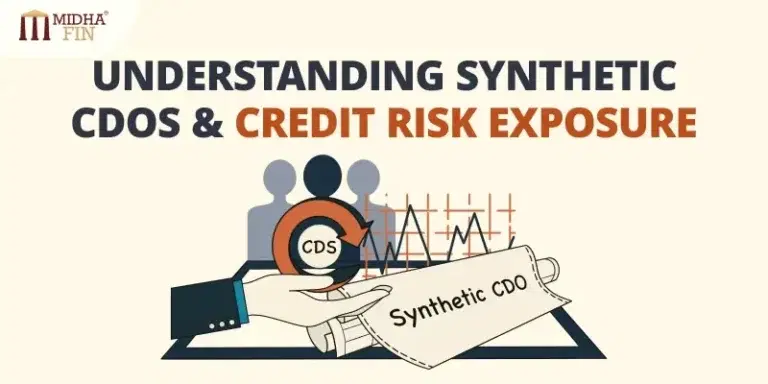Credit Risk |
Derivatives
Understanding Synthetic CDOs and Credit Risk Exposure

Synthetic Collateralized Debt Obligations (CDOs) are complex financial instruments that enable investors to gain credit exposure without owning the actual underlying assets. Unlike traditional, or “cash” CDOs, which involve purchasing physical assets such as loans or bonds, synthetic CDOs achieve exposure through derivative contracts, primarily Credit Default Swaps (CDS).
How Synthetic CDOs Work
In a synthetic CDO, a Special Purpose Vehicle (SPV) is created to facilitate the transaction. Instead of buying actual securities, the SPV sells CDS contracts. By selling a CDS, the SPV is essentially taking on the credit risk of the reference entity, agreeing to compensate the buyer if the entity defaults on its obligations.
The SPV receives periodic premiums from the buyer of the CDS as compensation for assuming this risk. To safeguard against potential default payments, the SPV typically invests the received premiums into high-quality, risk-free assets such as government bonds. This structure allows the SPV to be exposed to credit risk while holding safe assets, thus creating a “synthetic” exposure.
Benefits and Risks
Synthetic CDOs provide several advantages, such as flexibility and the ability to take on credit exposure without needing to source or purchase the underlying assets. They are often used to manage risk, speculate on credit movements, or gain diversified exposure to credit markets.
However, the risks are significant. The complexity and leverage involved can amplify losses in the event of a default. Moreover, the 2008 financial crisis highlighted the potential for systemic risk associated with synthetic CDOs, as they can spread risk across multiple financial institutions.
Key Takeaways
- Credit Exposure without Ownership: Synthetic CDOs allow investors to gain credit exposure without holding the actual asset.
- Role of the SPV: The SPV sells CDS to assume credit risk and uses the premium received to invest in risk-free assets.
- Risk and Reward: While synthetic CDOs offer flexibility and potential high returns, they come with heightened risk due to leverage and complexity.
In summary, synthetic CDOs are powerful financial tools that require a deep understanding of credit risk and market dynamics. When used appropriately, they can provide valuable credit exposure and diversification, but their inherent risks must be carefully managed.


